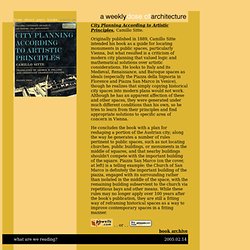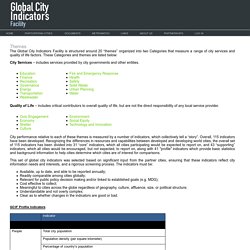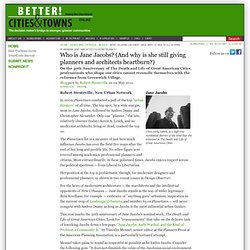

Urban Design Compendium. The Urban Design Compendium was originally prepared by Llewelyn Davies Yeang in association with Alan Baxter and Associates, and published by English Parterships in August 2000.

Since that time the UDC has become an internationally renowned text for those engaged with the world of urban design. As a companion to the two Urban Design Compendium publications, this site provides guidance on good urban design – summarising the principles of urban design, how they can be applied and the processes which lead to successful places. City Planning According to Artistic Principles by Camillo Sitte. City Planning According to Artistic Principles, Camillo Sitte.

Originally published in 1889, Camillo Sitte intended his book as a guide for locating monuments in public spaces, particularly Vienna, but what resulted is a criticism of modern city planning that valued logic and mathematical solutions over artistic considerations. He looks to Italy and its Medieval, Renaissance, and Baroque spaces as ideals (especially the Piazza della Signoria in Florence and Piazza San Marco in Venice), though he realizes that simply copying historical city spaces into modern plans would not work. Although he has an apparent affection of these and other spaces, they were generated under much different conditions than his own, so he tries to learn from their principles and find appropriate solutions to specific area of concern in Vienna. . . or . .
Analysing and managing urban growth — EEA. Urban growth — why does it matter?

Artificial land cover increased by 3.4 % in Europe between 2000 and 2006 — by far the largest proportional increase in all land use categories. Although artificial cover accounts for just 4 % of the EU's land area, the fact that it is dispersed means that more than a quarter of EU territory is directly affected by urban land use. These results are based on comprehensive surveys for the years 1990-2000-2006 and confirmed by more recent individual studies. Following the results of the PLUREL project (2010), peri-urban (discontinuous) areas grew 4 times faster than continuous urban areas. Mudrac.ffzg.hr/~ltatomir/skripte/skripte/urbana sociologija.pdf.
Information about the Local Government Commission. Preservation, Mixed Use and Urban Vitality. Periferia Internet Resources for Architecture and Urban Design in the Caribbean Ä Periferia: Urban: Resources: Preservation, Mixed Use and Urban Vitality Preservation, Mixed Use and Urban Vitality by Jonathan Cohen, AIA Synopsis This project will examine the roles of preservation and mixed use as two among several interconnected factors contributing to urban vitality.

Jane Jacobs' book, The Death and Life of Great American Cities (1961), warned that land use segregation and low density dispersal were killing off the diversity that is the basis of urban life. For Jacobs, the essential phenomenon of cities is the mixture of activities they support and encourage. All districts in a city must serve more than one primary function, and preferably at least three, so that there will be people on different schedules using facilities in common.
In order to illustrate this concept, it is necessary to examine the influences that have historically shaped city form. The complete text is available at. HKA - Bijela knjiga -The Future of Architecture. Global City Indicators Facility : Themes. The Global City Indicators Facility is structured around 20 “themes” organized into two Categories that measure a range of city services and quality of life factors.

These Categories and themes are listed below: City Services – includes services provided by city governments and other entities. Quality of Life – includes critical contributors to overall quality of life, but are not the direct responsibility of any local service provider. City performance relative to each of these themes is measured by a number of indicators, which collectively tell a “story”. Overall, 115 indicators have been developed. This set of global city indicators was selected based on significant input from the partner cities, ensuring that these indicators reflect city information needs and interests, and a rigorous screening process. GCIF Profile Indicators. Hochhausfolder-en.pdf (application/pdf Object) CNU celebrates federal shift from freeways to boulevards.
Author: Nora Beck and Sam Newberg Congress for the New Urbanism CNU was excited to hear the joint announcement in October of TIGER II grants by the U.S.

The Mind Mapping Site. Constructivismpreprint.pdf (application/pdf Object) All about urban exploration. What is urban exploration?

Urban exploration. It goes by many names such as UE, UrbEx, Infiltration, and Reality Hacking. It is all about going into places you are “not supposed" to go. Urban exploration has 2 different meanings for me: The first one is related to the city we live in. The second meaning is related to the abandoned places or utility tunnels themselves. A much broader definition, written down by Ninjalicious, spiritual "father" of urban exploration, can be found on www.infiltration.org (the zine about places you're not supposed to go)
. , a book written by the same author. Who is Jane Jacobs? (And why is she still giving planners and architects heartburn?) Circa early 1960s, in a high-rise residential district of the kind that she criticized in The Death and Life of Great American Cities.

Robert Steuteville, New Urban Network In 2009, Planetizen conducted a poll of the top "urban thinkers" of all time. The top spot, by a wide margin, went to Jane Jacobs, followed by Andres Duany and Christopher Alexander. Only one "planner," the late, relatively obscure (today) Kevin A. Lynch, and no modernist architects, living or dead, cracked the top 10. The Planetizen list is a measure of just how much influence Jacobs has over the field five years after the end of her long and prolific life. Her position at the top is problematic, though, for modernist designers and professional planners, as shown in two recent essays in Design Observer.
For the heirs of modernists architecture — the starchitects and the intellectual opponents of New Urbanism — Jane Jacobs stands in the way of wider legitimacy. How Walkable Streets can Boost the Economy. This post is also available in: Chinese (Traditional) If you think about your favourite streets, the ones where you like to hang out and meet up with friends: the chances are that these types of street are walkable.

Well it turns out that walkable streets are not only fun and exciting places to be, they are also incredibly profitable. Research commissioned by the TfL Urban Design team has found that making a street more walkable can add up to £30,000 to the average property price in that street. In one case study, they found that over £9.5million had been added to local property prices by improving a street with: widened pavements;extra trees;improved lighting;new wayfinding signs. The Shared Space street at New Road, Brighton is very walkable Shoppers like walkability As well as house prices, the study also found a financial link between street walkability and shop rental values. This adds to the growing body of evidence that shoppers like walkability. Money talks.